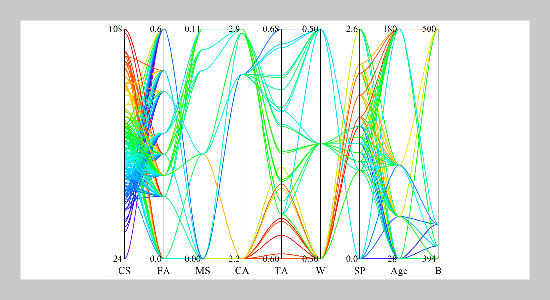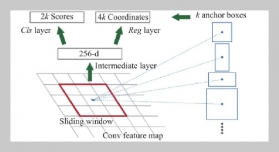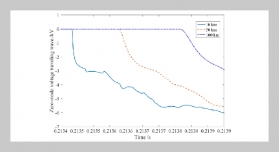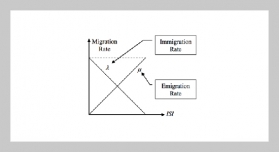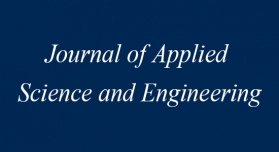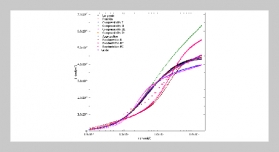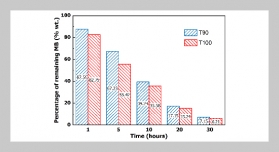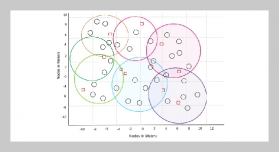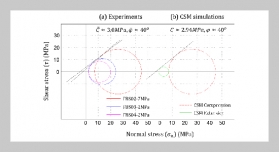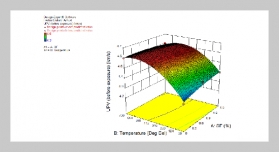- [1] S. W. Forster, (1994) “High-performance concrete: stretching the paradigm" Concrete International 16(10): 33–34.
- [2] V. M. Malhotra, (2006) “Reducing CO2 emissions" Con�crete international 28(9): 42–45.
- [3] P. K. Mehta, (2002) “Greening of the concrete industry for sustainable development" Concrete international 24(7): 23–28.
- [4] E. G. Nawy. Concrete construction engineering handbook. CRC press, 1997.
- [5] P. K. Mehta and P. J. Monteiro. Concrete: microstruc�ture, properties, and materials. McGraw-Hill Education, 2014.
- [6] J. Bai, B. Sabir, S. Wild, and J. Kinuthia, (2000) “Strength development in concrete incorporating PFA and metakaolin" Magazine of concrete research 52(3): 153–162.
- [7] G. Menéndez, V. Bonavetti, and E. Irassar, (2003) “Strength development of ternary blended cement with limestone filler and blast-furnace slag" Cement and Con�crete Composites 25(1): 61–67.
- [8] W. Sun, Y. Zhang, S. Liu, and Y. Zhang, (2004) “The influence of mineral admixtures on resistance to corrosion of steel bars in green high-performance concrete" Cement and Concrete Research 34(10): 1781–1785.
- [9] N. Farzadnia, A. A. A. Ali, and R. Demirboga, (2011) “Incorporation of mineral admixtures in sustainable high performance concrete" International Journal of Sus�tainable Construction Engineering and Technology 2(1):
- [10] A. Ahmad, W. Ahmad, F. Aslam, and P. Joyklad, (2022) “Compressive strength prediction of fly ash-based geopolymer concrete via advanced machine learning tech�niques" Case Studies in Construction Materials 16: e00840.
- [11] K. T. Nguyen, Q. D. Nguyen, T. A. Le, J. Shin, and K. Lee, (2020) “Analyzing the compressive strength of green fly ash based geopolymer concrete using experiment and machine learning approaches" Construction and Building Materials 247: 118581.
- [12] S. S. Raza, M. T. Amir, M. Azab, B. Ali, M. Abdal�lah, M. H. El Ouni, and A. B. Elhag, (2022) “Effect of micro-silica on the physical, tensile, and load-deflection characteristics of micro fiber-reinforced high-performance concrete (HPC)" Case Studies in Construction Mate�rials 17: e01380.
- [13] W. Zhu, L. Huang, and Z. Zhang, (2022) “Novel hybrid AOA and ALO optimized supervised machine learning approaches to predict the compressive strength of admixed concrete containing fly ash and micro-silica" Multiscale and Multidisciplinary Modeling, Experiments and Design 5(4): 391–402.
- [14] T. Chen, X. Gao, and M. Ren, (2018) “Effects of auto�clave curing and fly ash on mechanical properties of ultra�high performance concrete" Construction and Building Materials 158: 864–872.
- [15] P. Rossi, (2013) “Influence of fibre geometry and matrix maturity on the mechanical performance of ultra high- performance cement-based composites" Cement and Concrete Composites 37: 246–248.
- [16] H. Yazıcı, H. Yi˘giter, A. ¸S. Karabulut, and B. Baradan, (2008) “Utilization of fly ash and ground granulated blast furnace slag as an alternative silica source in reactive powder concrete" Fuel 87(12): 2401–2407.
- [17] L. Urbonas, D. Heinz, and T. Gerlicher, (2013) “Ultra�high performance concrete mixes with reduced portland cement content" Journal of Sustainable Architecture and Civil Engineering 3(4): 47–51.
- [18] F. De Larrard and T. Sedran, (2002) “Mixture�proportioning of high-performance concrete" Cement and concrete research 32(11): 1699–1704.
- [19] I.-C. Yeh, (1999) “Design of high-performance concrete mixture using neural networks and nonlinear program�ming" Journal of Computing in Civil Engineering 13(1): 36–42.
- [20] H. Yin, S. Liu, S. Lu, W. Nie, and B. Jia, (2021) “Pre�diction of the compressive and tensile strength of HPC concrete with fly ash and micro-silica using hybrid algo�rithms" Advances in Concrete Construction 12(4): 339.
- [21] L. Huang, W. Jiang, Y. Wang, Y. Zhu, and M. Afzal, (2022) “Prediction of long-term compressive strength of concrete with admixtures using hybrid swarm-based algo�rithms" Smart Structures and Systems, An Interna�tional Journal 29(3): 433–444.
- [22] C. M. Bishop and N. M. Nasrabadi. Pattern recognition and machine learning. 4. 4. Springer, 2006.
- [23] J.-S. Jang and J.-J. Chen. “Neuro-fuzzy and soft com�puting for speaker recognition”. In: Proceedings of 6th international fuzzy systems conference. 2. IEEE. 1997, 663–668.
- [24] Z. Waszczyszyn and M. Slonski, (2010) “Some prob�lems of artificial neural networks design" Advances of soft computing in engineering 512: 237–316.
- [25] Z. Waszczyszyn, M. Slonski, B. Miller, and G. Pi�atkowski. “Bayesian neural networks in the analy�sis of structural mechanics problems”. In: 8th World congress on computational mechanics (WCCM8), Venice, Italy, EU. 2008.
- [26] A. H. Gandomi, A. H. Alavi, D. Mohammadzadeh Shadmehri, and M. Sahab, (2013) “An empirical model for shear capacity of RC deep beams using genetic�simulated annealing" Archives of Civil and Mechani�cal Engineering 13: 354–369.
- [27] S. Afzal, B. M. Ziapour, A. Shokri, H. Shakibi, and B. Sobhani, (2023) “Building energy consumption predic�tion using multilayer perceptron neural network-assisted models; comparison of different optimization algorithms" Energy 282: 128446.
- [28] F. Masoumi, S. Najjar-Ghabel, A. Safarzadeh, and B. Sadaghat, (2020) “Automatic calibration of the ground�water simulation model with high parameter dimensional�ity using sequential uncertainty fitting approach" Water Supply 20(8): 3487–3501.
- [29] Z. Nurlan, (2022) “A novel hybrid radial basis function method for predicting the fresh and hardened properties of self-compacting concrete" Advances in Engineering and Intelligence Systems 1(01):
- [30] H. Cheng, S. Kitchen, and G. Daniels, (2022) “Novel hybrid radial based neural network model on predicting the compressive strength of long-term HPC concrete" Ad�vances in Engineering and Intelligence Systems 1(02):
- [31] S. K. Babanajad, A. H. Gandomi, D. Moham�madzadeh, and A. H. Alavi, (2013) “Numerical mod�eling of concrete strength under multiaxial confinement pressures using linear genetic programming" Automa�tion in construction 36: 136–144. DOI: 10.1016/j.autcon.2013.08.016.
- [32] D.-C. Feng, Z.-T. Liu, X.-D. Wang, Y. Chen, J.-Q. Chang, D.-F. Wei, and Z.-M. Jiang, (2020) “Machine learning-based compressive strength prediction for con�crete: An adaptive boosting approach" Construction and Building Materials 230: 117000. DOI: 10.1016/j.conbuildmat.2019.117000.
- [33] H. S. Ullah, R. A. Khushnood, F. Farooq, J. Ahmad, N. I. Vatin, and D. Y. Z. Ewais, (2022) “Prediction of compressive strength of sustainable foam concrete using individual and ensemble machine learning approaches" Materials 15(9): 3166. DOI: 10.3390/ma15093166.
- [34] J. Kasperkiewicz, J. Racz, and A. Dubrawski, (1995) “HPC strength prediction using artificial neural network" Journal of Computing in Civil Engineering 9(4): 279–284. DOI: 10.1061/(ASCE)0887- 3801(1995)9: 4(279).
- [35] M. Jakubek and Z. Waszczyszyn. “Neural analysis of concrete fatigue durability by the neuro-fuzzy FWNN”. In: International Conference on Artificial In�telligence and Soft Computing. Springer. 2004, 1075–1080.
- [36] H. Naderpour, A. H. Rafiean, and P. Fakharian, (2018) “Compressive strength prediction of environmen�tally friendly concrete using artificial neural networks" Journal of Building Engineering 16: 213–219.
- [37] H. Mashhadban, S. S. Kutanaei, and M. A. Sayarine�jad, (2016) “Prediction and modeling of mechanical prop�erties in fiber reinforced self-compacting concrete using particle swarm optimization algorithm and artificial neu�ral network" Construction and Building Materials 119: 277–287. DOI: 10.1016/j.conbuildmat.2016.05.034.
- [38] S. Jueyendah, M. Lezgy-Nazargah, H. Eskandari�Naddaf, and S. Emamian, (2021) “Predicting the me�chanical properties of cement mortar using the support vector machine approach" Construction and Building Materials 291: 123396.
- [39] L. Lam, Y. Wong, and C.-S. Poon, (1998) “Effect of fly ash and silica fume on compressive and fracture behaviors of concrete" Cement and Concrete research 28(2): 271–283.
- [40] B. T. Pham, D. T. Bui, I. Prakash, and M. Dholakia, (2017) “Hybrid integration of Multilayer Perceptron Neu�ral Networks and machine learning ensembles for land�slide susceptibility assessment at Himalayan area (India) using GIS" Catena 149: 52–63.
- [41] N. Karballaeezadeh, F. Zaremotekhases, S. Shamshir�band, A. Mosavi, N. Nabipour, P. Csiba, and A. R. Várkonyi-Kóczy, (2020) “Intelligent road inspection with advanced machine learning; hybrid prediction mod�els for smart mobility and transportation maintenance systems" Energies 13(7): 1718.
- [42] S. Zhao, T. Zhang, S. Ma, and M. Chen, (2022) “Dan�delion Optimizer: A nature-inspired metaheuristic algo�rithm for engineering applications" Engineering Appli�cations of Artificial Intelligence 114: 105075. [43] G. Dhiman and A. Kaur, (2019) “STOA: a bio-inspired based optimization algorithm for industrial engineering problems" Engineering Applications of Artificial In�telligence 82: 148–174.
